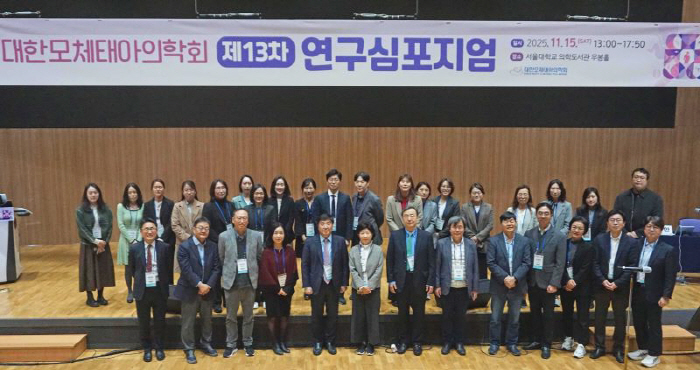The Korean Society of maternal and fetal medicine and the Korean Society of Assisted Reproductive Medicine present the current status and risk factors of multiple pregnancies
Nov 20, 2025
|
The two societies are an organization of maternal fetal medicine experts in charge of high-risk maternal and fetal care and assisted reproductive experts in the field of infertility and in vitro fertilization, and polymorphic pregnancies in Korea are increasing rapidly as more couples attempt to conceive in vitro due to increased marriage and childbirth ages. Multiple pregnancy refers to the condition of being pregnant with more than twins, and the two societies emphasized the need to be aware of the risks as such an increase puts a burden on maternal and newborn health.
Korea has the lowest total fertility rate in the world, but the multiple birth rate remains very high worldwide. The proportion of multiple births more than doubled over 17 years, from 2.7% in 2007 to 5.5% in 2023, which is closely linked to increased use of assisted reproductive techniques such as in vitro baby procedures. It also contrasts with the decline in the ratio of multiple births in Japan (2.21% → 2.04%) and the United States (3.37% → 3.14%) during the same period.
Both societies pointed out that multiple pregnancies are a 'very important high risk factor in obstetrics'. The risk of preterm birth in multiple pregnant women is as high as 60%, and preterm birth can be a major risk factor for developmental delays and cerebral palsy. Another problem was that the probability of giving birth to twins in natural pregnancy was about 1%, while in vitro procedures, it increased to 25-30%, greatly increasing the likelihood of multiple pregnancies.
Multiple pregnancy has been shown to increase the risk of multiple complications in pregnant women. Twin pregnancy increases the risk of various complications, such as ▲6 times the risk of premature and early labor than single pregnancy ▲2 times the risk of pregnancy poisoning (9 times for triplets) ▲3 times the risk of postpartum bleeding ▲3 times the risk of thrombotic disease. Not only difficulties in the pregnancy and childbirth process, but also the stress and economic burden of parenting after childbirth can be much greater than that of a single fetus.
Fetuses and newborns are also at high risk. More than half of twins are born before 37 weeks, and 90% of triplets are born prematurely or underweight. The neonatal intensive care unit (NICU) hospitalization rate is about 25% for twins and 75% for triplets, and the risk of cerebral palsy is four times higher for twins and 18 times higher for triplets than for single babies. In multiple pregnancies, the risk of developing congenital malformations may also increase.
The two societies emphasized that the goal of a healthy pregnancy is the safety of mothers and babies, and explained that infertility treatment is also changing to minimize the risk of multiple pregnancies as the recent development of embryo culture and freezing technology has increased pregnancy success rates. Single Embryo Transfer (SET) has been introduced as a way to help reduce the likelihood of twin pregnancy while maintaining pregnancy success rates.
In addition, the number of embryo transplants during in vitro procedures should be carefully determined in consideration of the mother's age, quality of embryos, past pregnancy history, and acceptance of twins, and regular checkups and intensive management by medical staff specializing in high-risk mothers are needed if diagnosed with multiple pregnancies.
Seo Chang-seok, president (gynecology) of the Korean Association for Assisted Reproductive Technology, said, `Although two to three embryos are transplanted depending on the mother's age to increase the success rate of pregnancy, the ultimate goal of assisted reproductive techniques goes beyond simple pregnancy success to the birth of a healthy single fetus.'"Frozen embryos and development of culture techniques, pre-implantation genetic diagnosis, and elaboration of embryo selection algorithms further solidify the basis for single embryo transfer, and the accumulated clinical evidence shows that single embryo transfer is an effective way to prevent unnecessary multiple pregnancies while maintaining cumulative pregnancy rates."
Park Joong-shin, president of the Korean Society of Maternal and Child Care (Gynecology), said "Multiple pregnancy is an important high-risk factor related to premature birth, developmental delay, and cerebral palsy, so a preventive approach is very necessary" I hope this fact sheet will help those preparing for pregnancy or considering infertility treatment by organizing the current status and risks of multitude pregnancy in an easy-to-understand manner"
|
This article was translated by Naver AI translator.















